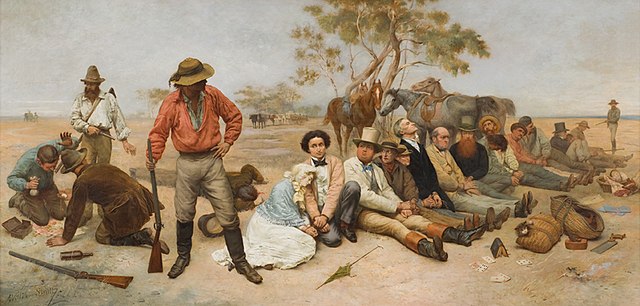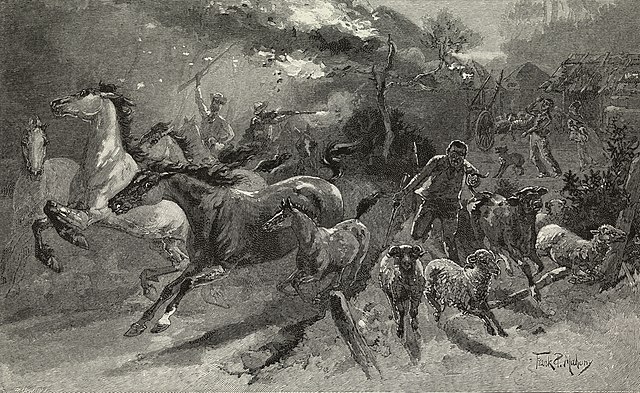Edward Kelly was an Australian bushranger, outlaw, gang leader and convicted police-murderer. One of the last bushrangers, he is known for wearing a suit of bulletproof armour during his final shootout with the police.
Kelly's boyhood home, built by his father in Beveridge in 1859
At age 11, Kelly saved a young boy from drowning in a creek, and was awarded this green sash in recognition of his bravery. Kelly wore the sash under his armour during his last stand at Glenrowan. It remains stained with his blood. (Benalla Museum)
Harry Power has been described as Kelly's bushranging "mentor".
Power's capture. Kelly was accused of informing on the bushranger.
Bushrangers were originally escaped convicts in the early years of the British settlement of Australia who used the bush as a refuge to hide from the authorities. By the 1820s, the term had evolved to refer to those who took up "robbery under arms" as a way of life, using the bush as their base.
William Strutt's Bushrangers on the St Kilda Road, painted in 1887, depicts what Strutt described as "one of the most daring robberies attempted in Victoria" in 1852. The road was the scene of frequent hold-ups during the Victorian gold rush by bushrangers, mostly former convicts from Van Diemen's Land (present-day Tasmania), which collectively became known as the St Kilda Road robberies.
Convict artist Joseph Lycett's 1825 painting of the Nepean River shows a gang of bushrangers with guns.
Vandemonian bushrangers plundering and burning a homestead
Bushrangers attack mounted policemen guarding a gold escort








